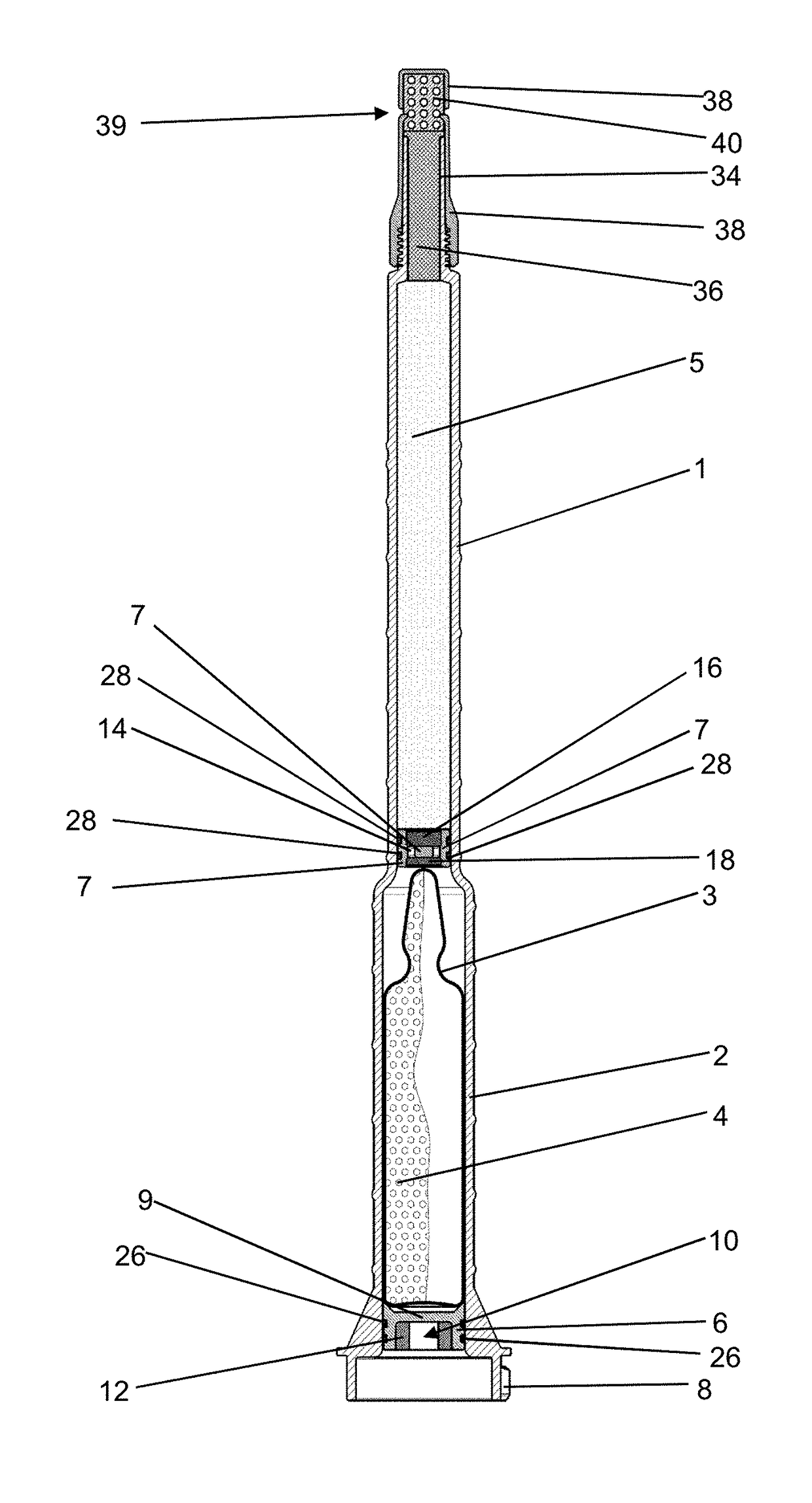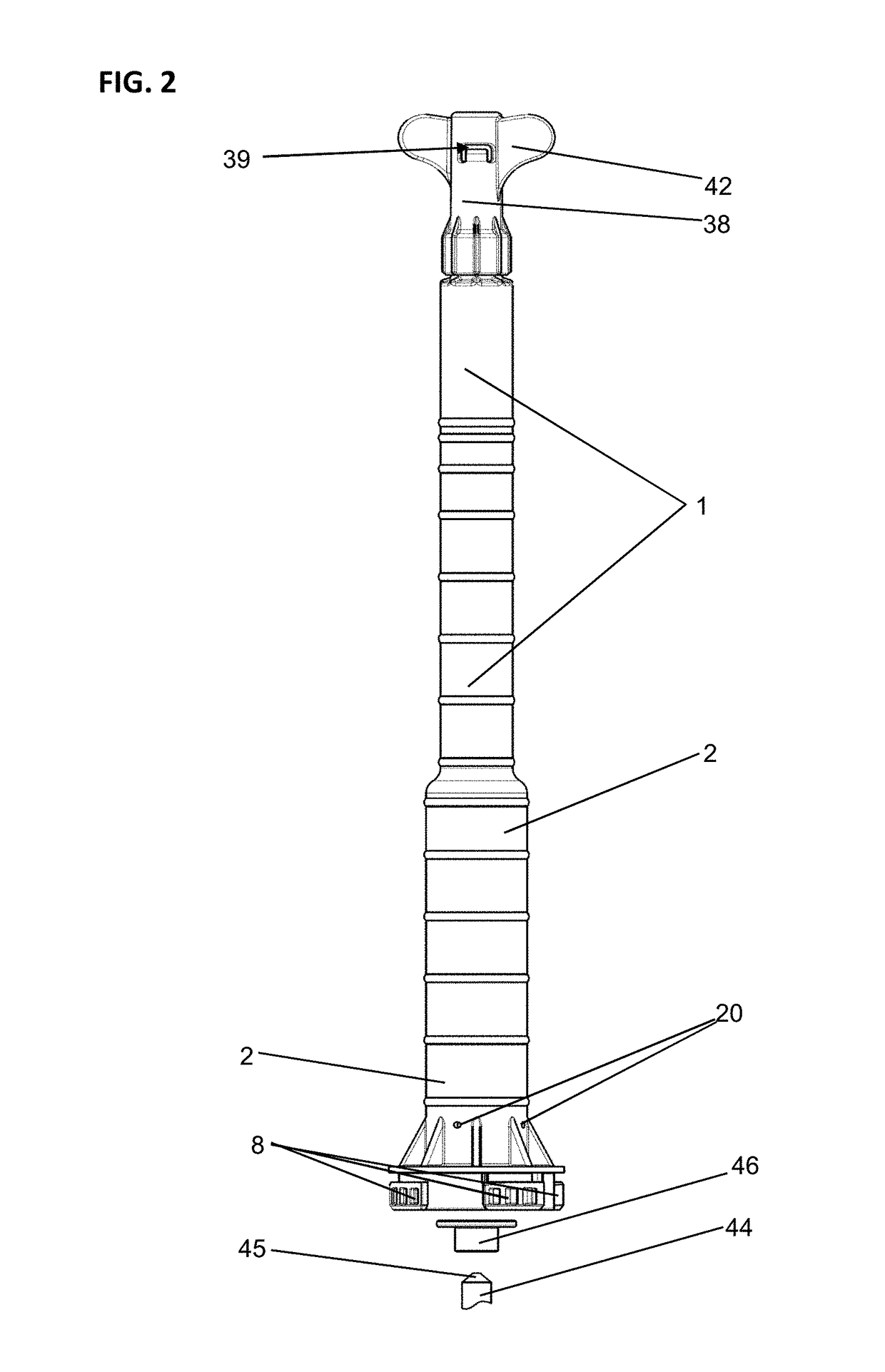Device for storage, mixing and dispensing of a bone cement, and pertinent method
a technology for mixing and dispensing devices and bone cement, which is applied in the direction of osteosynthesis devices, transportation and packaging, infusion syringes, etc., can solve the problems of inability to mix cement powders with said devices, disturbance of surgical procedures, and unsatisfactory odor, so as to reduce radiation exposure of physicians, minimize the effect of unpleasant odor and maximum simplified operation of the devi
- Summary
- Abstract
- Description
- Claims
- Application Information
AI Technical Summary
Benefits of technology
Problems solved by technology
Method used
Image
Examples
first embodiment
[0195]The trocar 66 is directly connected to the hose 64, but can also be connected to the hose 64 by an adapter. The first embodiment in FIG. 5C shows a variant, in which a connector 72 connects a Luer system adapter 74 via a short hose 76 to the cartridge 1. The connector 72 can be screwed onto the dispensing tube 34 of the cartridge 1 with the aid of wings 78 in the way of a wing screw. For this purpose, the connector 72 comprises a matching internal thread.
[0196]The detail view of the detail magnification according to FIG. 6 of the valve system additionally shows that the tube 59 is connected to the hose 64 by an insert 80, which comprises a channel that aligns with the passage 61. For this purpose, the insert 80 is screwed into the tube 59. In order to ensure a pressure-tight connection, the hose 64 is crimped onto the insert 80 by a metal sleeve 82, and the tube 59 is sealed with respect to the internal wall of the dispensing tube 34 by two circumferential seals 84. The unders...
second embodiment
[0222]In this state, the cap 238 with the pore filter 236 and the foam 240 is unscrewed and, instead, an extended dispensing opening is screwed onto the dispensing tube 234. The extended dispensing opening can preferably comprise a three-way valve analogous to the first or Likewise, a hose and / or a trocar can be connected to the dispensing tube 234. The rod 44 is driven further and, in the process, its tip 45 punctures the feed plunger 206, which is blocked by the step between the cartridge 201 and the receptacle 202, at the predetermined breakage site 209 and, if applicable, punctures the cap 46 earlier. The shreds and / or residues of the film bag 203 are pushed aside in this context. The tip 45 of the rod 44 hits against the dispensing plunger 207.
[0223]The bone cement dough 54 can be dispensed through the hose 64 and the trocar 66 or through the dispensing tube 234. For this purpose, the dispensing plunger 207 is propelled in the direction of the dispensing tube 234 by the rod 44...
PUM
| Property | Measurement | Unit |
|---|---|---|
| force | aaaaa | aaaaa |
| thickness | aaaaa | aaaaa |
| surface area | aaaaa | aaaaa |
Abstract
Description
Claims
Application Information
 Login to view more
Login to view more - R&D Engineer
- R&D Manager
- IP Professional
- Industry Leading Data Capabilities
- Powerful AI technology
- Patent DNA Extraction
Browse by: Latest US Patents, China's latest patents, Technical Efficacy Thesaurus, Application Domain, Technology Topic.
© 2024 PatSnap. All rights reserved.Legal|Privacy policy|Modern Slavery Act Transparency Statement|Sitemap



